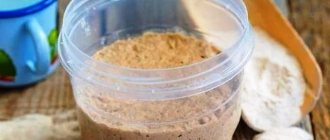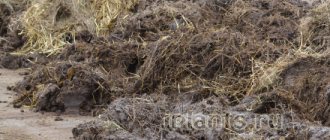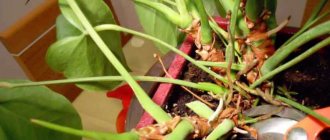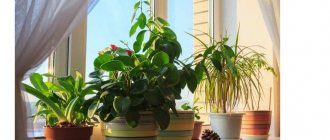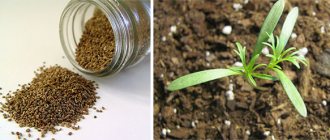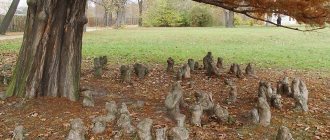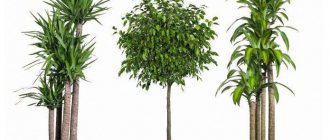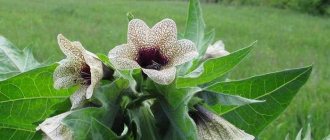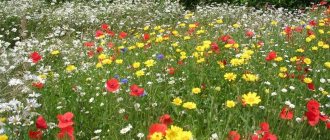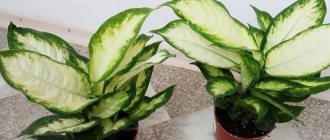- Fertilizer release forms.
- Macro- and microelements in fertilizers for indoor plants.
- What types of nitrogen fertilizers are there and what plants need nitrogen.
- Types of nitrogen fertilizers.
- What kind of soil should nitrogen fertilizers be applied to?
- What plants need nitrogen?
- Potassium fertilizers for indoor plants.
- How to determine potassium deficiency in a plant?
- Types of potash fertilizers.
- Which plants need potassium?
- All about phosphorus fertilizers.
- Phosphorus deficiency in plants - diagnosis.
- Types of phosphate fertilizers.
- Which plants should be fed with phosphorus fertilizers?
- Manure for fertilizing indoor plants.
- The benefits of peat as a fertilizer.
- Using bird droppings to fertilize plants.
- Compost for fertilizing plants.
- Is sawdust a fertilizer?
- Bone meal is a very effective organic fertilizer.
Plants, like all living organisms, need vitamins and minerals. And if “street” inhabitants receive all this from the outside, then with indoor plants things are different. Just imagine that we replant many indoor plants no more than once every 2-3 years, and sometimes less often. During this time, we water them as the soil dries out, but by replenishing the plants with life-giving moisture, we simultaneously wash out from the soil all the useful minerals that are so necessary to maintain a lush crown, flowering and growing season. And during the flowering period, all plants cannot do without additional nutrition , because the poor fellows use all their strength on this process, and without replenishing (with our help) their strength they can completely wither and die. In this case, you need to know how to quickly revive a houseplant.
Fertilizer release forms.
Liquid fertilizers Granular or compressed fertilizers Powdered fertilizers Long-acting fertilizers in the form of tablets or sticks
The market currently offers a huge variety of fertilizers for indoor plants. For example, there are the following forms of fertilizer release:
- liquid fertilizers
- granular fertilizers
- fertilizers in powder form
- long-acting (prolonged) fertilizers in the form of sticks.
Important! Liquid fertilizers are best absorbed by plant roots.
| Liquid fertilizers | Granular fertilizers | Fertilizers in powder form | Long-acting (prolonged) fertilizers in the form of sticks or tablets. | |
| Description. | They are a concentrate of salts in liquid form. | Fertilizers in the form of small lumps (granules). Free-flowing and non-caking. The size of the granules varies from 1.5 to 4 cm. | Fertilizers in the form of dry powder. Bulk. | They have the form of a medical tablet or a stick of compressed fertilizer. |
| Mode of application. | Dilute the concentrate in water in the proportions recommended in the instructions. | Mix directly with soil. | Mix directly into the top layer of substrate. Can be mixed not only with soil, but also with coconut and similar substrates. The second method of application involves dissolving powder fertilizer in water and watering. | Locally. The stick must be inserted into the top layer of soil. The quantity depends on the volume of the pot. |
| Impact and effectiveness. | Of the fertilizers presented, they are considered the most effective, due to better absorption by the roots of the plant. | Efficiency is average. With each watering, beneficial microelements are gradually released from the granules. | High efficiency. Fertilizing with powder fertilizers can be done no more than once every 3-8 weeks, depending on the type of powder fertilizer chosen. | Efficiency is lower. It has a prolonged effect, microelements are released when watering. Due to local exposure, microelements are distributed unevenly and do not always reach the roots of the plant. |
| Possibility of foliar feeding. | Eat. Does not replace root feeding. Used in addition to root feeding. | No. | Eat. Foliar feeding is carried out with a powder solution diluted in water. | No. |
| Price. | The most expensive compared to granular or pressed ones. | Not tall. | High. From 700 rub. per pack 125 grams. | Not tall. |
Macro- and microelements in fertilizers for indoor plants.
To nourish indoor plants, macro- and microelements are needed. Macronutrients are needed in large quantities and include nitrogen, potassium and phosphorus. Microelements are also necessary to maintain plant life, but in much smaller quantities than macroelements. These include: calcium, sulfur, molybdenum, iron, copper, manganese, boron, magnesium .
Nitrogen, phosphorus and potassium in the life of indoor plants.
The whole variety of fertilizers, of any format and consistency, can be divided into two huge categories of fertilizers - mineral and organic.
Sapropel
In other words, lake silt, or, as it is also called, “miraculous mud” is another type of plant material. It contains nitrogen, potassium, phosphorus, calcium, humus, vitamins and biologically active elements. Sapropel has found application in home and garden floriculture. Fertilizer undoubtedly improves the structure of the soil, enriches it, and transforms the plant. It is added during the process of transplanting into the soil (in the proportion of 1 part of sapropel: 10 parts of substrate), or during watering into water (also 1:10 - sapropel: water).
Be careful when purchasing sapropel from your hands! After all, if collected in environmentally hazardous areas, it can be dangerous due to the toxic compounds it contains. Typically, sapropel is sold in the form of a powder with a consistency similar to ash, dark gray in color, or compressed raw materials. Before use, the sludge must be ventilated so that the oxides of dangerous chemical elements disappear.
Mineral fertilizers for indoor plants.
Let's take a closer look at the types of mineral fertilizers. We will also divide them according to the macroelements that underlie them, that is, into nitrogen, potassium and phosphorus groups of fertilizers.
What types of nitrogen fertilizers are there and what plants need nitrogen.
Nitrogen is necessary for all indoor plants without exception for their growth and development.
Nitrogen is necessary for all indoor plants without exception for their growth and development. If there is a lack of nitrogen in the plant, the leaves turn pale, with further yellowing and wilting, as well as slower growth and the absence of new shoots.
Types of nitrogen fertilizers.
Ammonium nitrate is one of the most common nitrogen fertilizers.
Nitrogen fertilizers include: ammonium nitrate, urea (urea), ammonium sulfate, sodium nitrate, calcium nitrate.
What kind of soil should nitrogen fertilizers be applied to?
Almost any soil cannot contain sufficient amounts of nitrogen.
Keep in mind that almost any soil, be it gerbil or black soil, still cannot contain this macronutrient in sufficient quantities.
Important! The only thing that should be taken into account is that there is very little nitrogen in sandy soil, but there is much more of it in chernozem. Therefore, carefully calculate the dose of fertilizers applied depending on the type of soil!
What plants need nitrogen?
Any plant needs nitrogen. But you need to apply nitrogen fertilizer with the necessary caution and depending on the problem you want to solve with it .
Important! If you want the plant to actively grow leaf mass and actively vegetate, then nitrogen fertilizers can and should be applied. If your plant has already grown enough and you can’t wait for it to bloom, then nitrogen fertilizer is contraindicated, otherwise you will only achieve greater growth of shoots, and flowering will be delayed indefinitely.
.
Also take into account the fact that some plants need to be fed with nitrogen from the first days of life, and some not earlier than they produce a pair of leaves. From the first days of their appearance, nitrogen should be fed to calla rhizomes, irises, lemons, oranges, hippeastrums, clivias, hyacinths, etc.
Important! Excess nitrogen is just as harmful to indoor plants as its deficiency!
Excess nitrogen is just as harmful to indoor plants as its deficiency.
Potassium fertilizers for indoor plants.
Potassium is necessary to stimulate budding and fruiting.
How to determine potassium deficiency in a plant?
Potassium deficiency in plants is very easy to diagnose by characteristic signs, such as: yellowing of the edge of the leaf blade (the veins do not turn yellow), fading and dying of the lower leaves, thinning and wilting of the stem, and finally, lack of flowering.
Potassium deficiency in plants is very easy to diagnose by characteristic signs, such as: yellowing of the edge of the leaf blade (the veins do not turn yellow)
Important! Be careful, excess potassium harms plants no less than its deficiency.
Be careful, excess potassium harms plants no less than its deficiency.
Types of potash fertilizers.
Potash fertilizers include: potassium salt, potassium chloride and potassium sulfate.
Potash fertilizers include: potassium salt, potassium chloride and potassium sulfate.
Which plants need potassium?
Potassium fertilizer should only be applied to a healthy plant that is actively vegetating and preparing to bloom, or is already blooming. That is, potassium is needed by beautifully flowering plants, such as callas, anthuriums, streptocarpus, brovallias, gerberas, spathiphyllums, roses, hibiscus, etc.
Important! For some plants, potassium permanganate - potassium permanganate - can be used as a top dressing.
All about phosphorus fertilizers.
Phosphorus fertilizers belong to mineral fertilizers.
Phosphorus deficiency in plants - diagnosis.
With a lack of phosphorus, the color of the leaves is dark green, with a bluish tint, and very dull.
When there is a deficiency of phosphorus in plants, a number of nonspecific symptoms are observed that are characteristic of a deficiency or even an excess of other substances. However, there is at least 1 symptom by which one can judge precisely the lack of phosphorus - the color of the leaves. With a lack of phosphorus, the color of the leaves is dark green, with a bluish tint, and very dull. In addition, if we are talking not only about flowering, but also about fruiting, then the absence of fruits also indicates a lack of phosphorus in plants.
Types of phosphate fertilizers.
One of the most common phosphorus fertilizers is superphosphate.
Phosphorus fertilizers include: superphosphate, double superphosphate, ammophos, diammophos, orthophosphate, potassium metaphosphate, precipitate, phosphate slag, phosphate rock, bone meal, etc.
Which plants should be fed with phosphorus fertilizers?
Most beautifully flowering plants need phosphorus fertilizers, for example: spathiphyllums, begonias, fuchsias, anthurium and others. Their need for phosphorus usually increases during the period of budding and flowering. If there are non-flowering plants that also need phosphorus, albeit in a smaller volume, for example: ficus, araucaria, etc.
Important! You can kill two birds with one stone and not add each element separately, but use a complex fertilizer to replenish all micro- and macroelements at once.
Wood ash
Another effective and affordable organic material. It contains most microelements in a form accessible to plants: potassium, phosphorus, calcium, magnesium, iron, zinc, sulfur. But for fertilizer, ash should not contain harmful impurities - waste of printed materials, synthetic combustion products, heavy resins and plastics. The shelf life of ash is unlimited if moisture is prevented.
Dry ash can be safely added to the soil when replanting, or sprinkled with it on the soil in a pot and in the garden. This procedure disinfects, protects against the appearance of insect pests, and also enriches the soil with nutrients. By the way, with the help of ash you can reduce the acidity of the soil due to the lime it contains. How to determine soil acidity?
But don't overdo it! Just a few pinches are enough for one plant, because ash as a fertilizer is very active and can also cause a burn if overdosed. You can also prepare an ash solution, for which you take 1 tbsp per 1 liter of water for irrigation. ash, mix and let it brew for 24 hours.
Organic fertilizers for indoor plants.
Organic fertilizers are fertilizers made from exclusively natural ingredients.
If mineral fertilizers are artificially synthesized fertilizers for plants, then organic fertilizers are fertilizers made from exclusively natural ingredients (plant or animal origin) . They also contain both micro and macronutrients. Organic fertilizers include:
- manure
- peat
- bird droppings
- compost
- sawdust
- bone flour
Important! Banana peel remains one of the most affordable and effective organic fertilizers.
Manure for fertilizing indoor plants.
Manure from various animals can be used to fertilize nitrogen-poor soil.
Manure from various animals can be used to fertilize nitrogen-poor soil . As a rule, not fresh manure is used, but manure that has settled for 4 months to 3 years. Manure is either simply applied to the ground when digging or replanting plants, or manure can be diluted with water and used as a water fertilizer. Before watering, the solution is allowed to steep for about 2 weeks.
The benefits of peat as a fertilizer.
Peat is classified according to the degree of decomposition.
Peat cannot be considered a fertilizer as such. However, its use is highly recommended especially for indoor plants, because due to its fibrous structure, it makes the soil very breathable , which is especially necessary for plants that do not receive enough fresh air. According to the degree of decomposition they are distinguished:
- lowland peat
- high peat
- intermediate peat
Lowland peat is the remains of plants that have completely decomposed to a homogeneous substrate and which are located below the soil at a depth of approximately 15 centimeters. Most often used to prepare a substrate for indoor plants. High-moor peat is the remains of plants that have not completely decomposed and therefore cannot be used as fertilizers, and most often this type of peat is used in gardening to cover plants for the winter. Intermediate peat is a transitional state from one type of peat to another.
Using bird droppings to fertilize plants.
Chicken droppings are the most valuable compared to duck or goose droppings.
The most valuable poultry droppings are chicken and pigeon droppings, less valuable are goose and duck droppings. Bird droppings can also be used raw or as an aqueous solution.
Important! This fertilizer should not be overused for garden crops, as this leads to an increase in nitrates in plants and fruits.
Compost for fertilizing plants.
Compost is a mixture of organic fertilizers.
Compost is a mixture of organic fertilizers. You can make compost from plants or from manure. Compost from plants is prepared as follows: weeds, grass, leaves, soil, peat, etc. are placed in layers in a box. Throughout the year it is moistened and shoveled. Manure compost is prepared in a similar way , only manure is used as the main component. Such organic fertilizer will be ready a little faster, not in a year like the previous one, but after 5-6 months.
Is sawdust a fertilizer?
Sawdust itself is not a fertilizer.
Sawdust itself is not an organic fertilizer. Therefore, they can be fully used either in combination with urea or for mulching plants (shelter for the winter). This type of fertilizer is used, as a rule, only in gardening, and I have never heard of using sawdust to fertilize indoor plants.
Bone meal is a very effective organic fertilizer.
Bone meal is an excellent potassium-phosphorus fertilizer.
Bone meal is an excellent potassium-phosphorus fertilizer, which is obtained by grinding animal bones. Bone meal is used as a powder fertilizer, that is, diluted in water. And the plants are watered with an aqueous solution no more than once a month.
Advice from experienced flower growers
Attention! Homemade folk remedies do not completely replace mineral supplements. Homemade organic mixtures are used as a nutrient supplement, but not as a main base fertilizer.
Some simple tips from florists:
- soft water is needed for irrigation or nutrient solution . A simple and convenient way to soften water is to lower a fabric bag of peat (100 g) into a 2-3 liter watering can. After a day, the water will become soft. The peat cleaner is used 2-3 times, and then the peat is renewed.
- After introducing phytostimulants and watering, the top layer of soil is covered with food foil . The shelter will reduce evaporation and serve as additional lighting (the foil reflects the sun's rays). The method is convenient if in the summer the owners go to the dacha and home flowers are left for a short time without care.
- It is important to remember that house plants get sick and suffer from insects . To prevent possible troubles, regular inspection and special preventive and eradicating treatments with fungicides and insecticides are needed.
What is better - organic or mineral fertilizers for indoor plants?
If we take convenience as a criterion for fertilizing indoor plants, then of course it is better to use organic fertilizers and not have any problems.
Both types of fertilizers are good and both have their admirers. They are also approximately equivalent in efficiency. True, organic matter has a more prolonged effect due to the fact that the process of decomposition of fertilizers occurs directly in the soil. But there is an alternative to this in mineral fertilizers - for example, fertilizers in granules (we discussed this above).
Important! There is a misconception that an excess of organic matter does not harm the plant, unlike an excess of mineral fertilizers. I can assure you that this is not true. An excess of organic matter also negatively affects plants; moreover, when the elements of organic fertilizer decompose, the nitrogen nitrates contained in them are released, which, with frequent and irrational use, leads to the accumulation of these nitrates in plants and fruits , which is especially bad for garden crops and vegetables.
However, it should be understood that
the use of organic fertilizers at home is somewhat more complicated and this type of fertilizer is more suitable for garden plants or vegetable crops from your garden . In the case of garden and vegetable plants, I advise you to use organic fertilizers. Therefore, if we take convenience as a criterion for fertilizing indoor plants, then of course it is better to use organic fertilizers and not have any problems . Moreover, choosing organics in a release form convenient for you will not be a problem. Personally, I use liquid fertilizer for indoor plants and really love this particular form of release, so I have already accumulated a whole arsenal of different bottles and tubes. There are a number of rules that must be followed when using both mineral and organic fertilizers.
The feeding schedule is a helper, not a waste of time
The most reliable guarantee that you will not make mistakes with fertilizing is to draw up schedules of procedures for each plant and for your collection as a whole. It will take several hours to write out the necessary information and bring it into a unified system. But on the other hand, you will completely eliminate possible mistakes in care, and you can be sure that every plant in your home receives exactly the nutrients it needs. For each plant, write down:
- preferred fertilizing period;
- recommended frequency of procedures;
- type of fertilizers and their dosage.
By combining the “indicators” into a single table, you can build an effective and simple system that will eliminate any errors.
